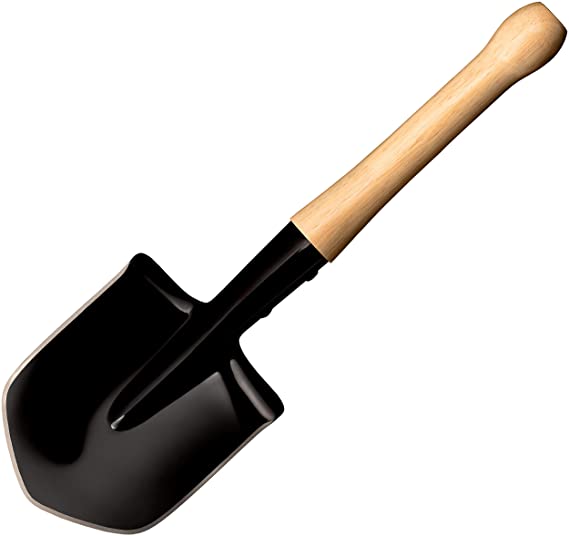No products in the cart.

They have a compact size, more uses than a Swiss army knife and are ideal for chopping on the snow and ice that Filomena has brought to Spain.
Despite the fact that the shovel is an older technology than the great monotheistic religions, it was not until the center of Spain appeared covered by the great Filomena snowfall that many urbanites have realized that it is not a bad idea to have a shovel for home or in the trunk of the car.
During the last political hours such as the vice president of the Community of Madrid, Ignacio Aguado, or the leader of the Popular Party, Pablo Casado have been photographed with a shovel removing snow and many Spaniards would have liked to have one to be able to make their way with their car between Snow.
A regular shovel (such as those carried by park and garden workers) can be cumbersome due to its large dimensions. However, there are pocket-sized (and much more practical) alternatives to combat snow and ice that stick to the asphalt and prevent cars from moving.
MPL-50: THE RUSSIAN MILITARY SHOVEL
Made of steel and designed for digging trenches on frozen ground, the shovel used for decades by the Spetznaz (the special forces of the Russian army) is a pocket-size alternative to consider thanks to its portable dimensions (about 50 centimeters long) and Its sharp, pointed edges make it an ideal tool for chipping on snow and hard ice.
However, despite the fact that the MPL-50 (the real name of this tool) became popular thanks to the videos and demonstrations that the Soviet special forces recorded with it, it is actually a Danish creation.
It was invented in 1869 by Mads Johan Buch Linnemann, a Danish army officer. His invention was so successful that that same year they began to be mass produced and in 1870 it became the official shovel of the armed forces of his country. However, his success had only just begun.
A year later, in 1871, the Austro-Hungarian Empire took an interest in his design and Mads moved to Vienna where he founded a factory for its mass production.
SO WHY IS IT KNOWN AS A RUSSIAN SHOVEL?
After its success in their country and in the Austro-Hungarian Empire, other continental powers such as Prussia, France and Russia became interested in the invention. However, only the Russian Empire recognized the patent, paid Mads 60,000 rubles in royalties, and commissioned 30,000 of these blades.
From the late 1870s to the present, Mads’s invention has survived to this day with virtually no changes in its design beyond the type of wood used in its handle.
After the fall of the Russian Empire, the troops of the Soviet Union continued to equip themselves with this invention. Due to its sharp edges (which allow it to also be used as an ax to fell trees or chop firewood), its pointed finish and its light weight but forceful design made it, in addition to a digging instrument, a excellent survival gadget and a melee weapon.
In addition, due to the symmetry of its head and the distribution of weights, it also began to be used as a throwing weapon, which is where much of its popularity comes from due to the spectacular demonstration videos recorded by the Russian military or people who simply use them to play aiming test in your garden.
The fall of the communist regime in Moscow caused that this shovel began to be produced in mass also in the West. It can be found for a price of around 30 euros in physical stores, Amazon (where it has an excellent rating of 4.7 / 5) or in other online stores. Among the different brands that make it today, the Cold Steel version is especially recognized among consumers.
WJQ-308 CHINA’S MULTIPURPOSE EVOLUTION
Although Madsen’s design is still king in this regard, the Chinese developed their own evolution of this portable shovel known as the WJQ-308.
Unlike the traditional version, the Chinese evolution of this blade has a head that can be placed in different positions thanks to a toothed wheel also made entirely of steel. This makes it easy to convert it into a pick or hoe.
Its head is asymmetrical and, unlike the traditional model, it has a sharp edge and a serrated edge that allows it to be used as a saw to cut logs. In addition, it also has a small notch designed to be used as a bottle opener and can opener.
It is an immensely popular model due to a 17-minute promotional video with millions of views on YouTube that has been circulating on the internet for more than a decade in which all its functions can be seen in action.
What’s your reaction?
Love0
Sad0
Happy0
Sleepy0
Angry0
Dead0
Wink0







